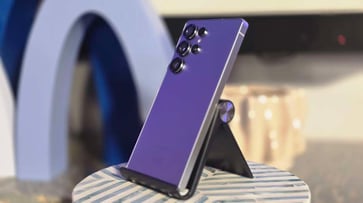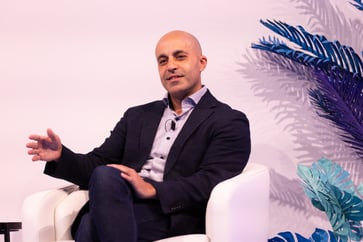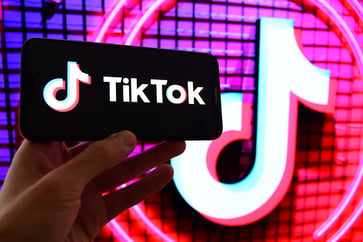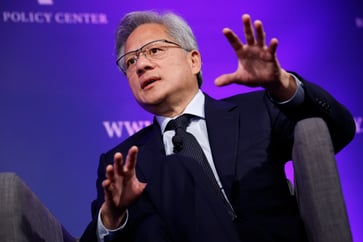The experience of having a brain implant in the operating room.
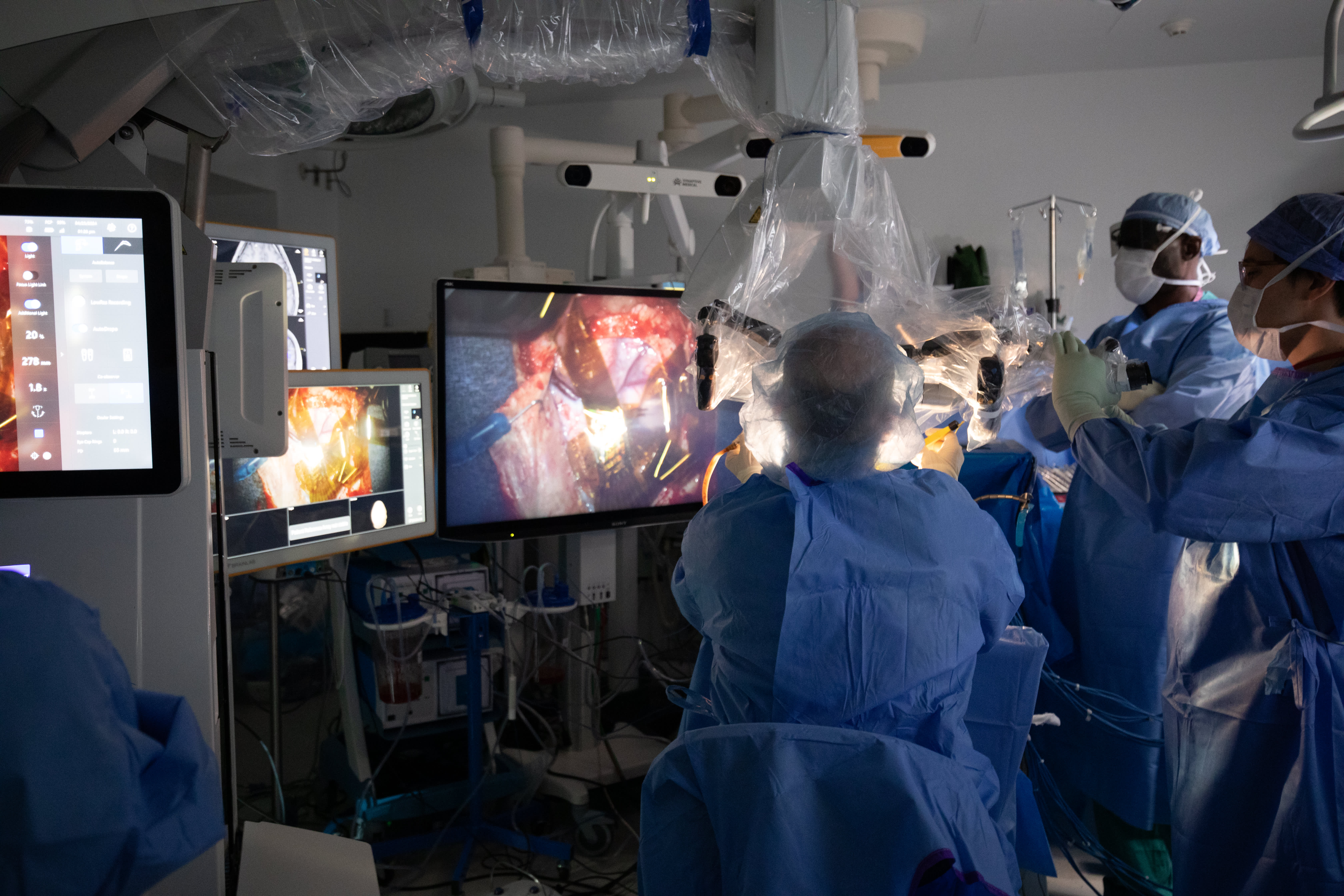
- The Mount Sinai Health System in New York City is hosting trials for Precision Neuroscience's brain-computer interface technology on human patients.
- In April, the company broke a record by simultaneously using four of its devices in an operating room, as observed by CNBC.
- According to its website, Precision's first application will assist patients with severe paralysis in regaining abilities such as speech and movement.
In the dimmed lights of an operating room at The Mount Sinai Hospital in New York City, Dr. Joshua Bederson readied himself to create history.
As a system chair for the Department of Neurosurgery at Mount Sinai Health System, Bederson is accustomed to spending extended periods in an operating room. With over 6,500 procedures under his belt, he mentally rehearses each step as if he were preparing for a gymnastics routine.
On this April morning, Bederson was preparing for a meningioma resection surgery, which involved removing a non-cancerous brain tumor. Bederson emphasized that his top priority is always to prioritize the patient's care, but in some instances, he also gets the opportunity to contribute to scientific advancements.
This procedure was one such case.
As Bederson sat down in the operating room, a small crowd gathered around him, their faces illuminated by the bright white light shining on the patient. Health-care workers, scientists, and CNBC craned forward, some peering through windows, to watch as Bederson attached four electrode arrays from Precision Neuroscience to the patient's brain for the first time.
During certain neurosurgical procedures, electrodes are utilized by neurosurgeons to monitor and avoid crucial regions of the brain, such as those responsible for speech and movement control. These small sensors can detect and transmit electrical signals, and an array consists of multiple electrodes arranged in a grid formation.
A three-year-old startup called Precision is developing a brain-computer interface (BCI), which translates neural signals into commands for external technologies. Neuralink, founded by Elon Musk, is the best-known company in this field.
Precision's BCI system aims to assist patients with severe paralysis in regaining functions such as speech and movement, while other companies like Synchron and Paradromics have developed BCI systems with varying goals and designs.
Precision's top-of-the-line BCI is known as the Layer 7 Cortical Interface. This microelectrode array is incredibly thin, resembling a piece of yellow scotch tape. Each array contains 1,024 electrodes, and Precision claims it can fit perfectly to the brain's surface without causing any harm to the tissue.
In April, Bederson set a record for the highest number of electrodes placed on the brain in real-time when he used four of the company's arrays during surgery. Moreover, the arrays were able to detect signals from the patient's individual fingers, which is much more detailed than standard electrodes can capture.
Saez, an associate professor of neuroscience, neurosurgery, and neurology at the Icahn School of Medicine at Mount Sinai, stated that using Precision's electrode array is equivalent to transforming a pixelated, low-resolution image into a 4K image. Saez and his team oversee Precision's collaboration with Mount Sinai.
"Saez stated in an interview with CNBC that instead of using 10 electrodes, they were using 1,000 electrodes. Despite reflecting the same underlying neurological activity, the depth, resolution, and detail obtained were significantly different."
Bederson stated that having access to this level of detail would enable doctors to perform surgeries and interventions with greater care in the future. Precision will rely on the ability to record and interpret signals from individual fingers as it works towards assisting patients in regaining fine motor control.
Although Precision has reached a significant milestone, there is still a long way to go before it achieves its ambitious objectives. The company is still awaiting approval from the U.S. Food and Drug Administration and has not yet implanted a permanent version of its technology in a patient.
Bederson stated in an interview with CNBC that he believes these actions are small steps towards achieving the ultimate objective of brain-computer interface.
Inside the operating room
In April, Bederson underwent surgery, which was not Precision's first rodeo. The company had previously placed its array on a human patient's brain 14 times.
Mount Sinai has partnered with Precision to conduct first-in-human clinical studies. The aim of each study varies, and the collaboration was announced in March.
At Mount Sinai, Precision is investigating various clinical applications for its array, including its potential to assist in monitoring the brain during surgery. During these procedures, surgeons like Bederson temporarily place Precision's array onto patients who are already undergoing brain surgery for a medical reason.
Patients give their consent to participate beforehand.
During these procedures, neurosurgeons typically use between four and almost 100 electrodes to map brain signals. However, Bederson plans to use 4,096 electrodes, which is significantly more than the current accepted practice.
In April, CNBC joined the operating room during a portion of these surgeries, as precision's arrays were being used.
The patient, who wished to remain unidentified, was asleep. Bederson's team had already removed a portion of their skull, leaving an opening approximately the size of a credit card. Four of Precision's arrays were meticulously arranged on a nearby table.
The employees of Precision trickled into the operating room after the patient was stabilized. They attached the arrays in a semi-circle around the patient's head and connected the blue wires to a cart filled with equipment and monitors.
As the co-founder and chief scientific officer of Precision, Dr. Benjamin Rapoport remained composed during every major procedure, despite the risks involved. In an interview with CNBC, he expressed his enthusiasm for each new case, particularly since the company is still in the learning process.
As Precision's preparations neared their end, Bederson entered the operating room and assisted with making some final tweaks to the set up. The overhead lights in the operating room were then turned off.
Ongoing chatter quieted to hushed whispers. Bederson was ready to get started.
He carefully pulled back a fibrous membrane called the dura to reveal the surface of the brain. He laid a standard strip of electrodes onto the tissue for a few minutes, and then it was time to test Precision's technology.
Using long bayonet forceps, Bederson carefully placed all four of Precision's electrode arrays onto the patient's brain. The first two arrays went in without any issues, but the last two were a bit more difficult to position.
Bederson worked with a small section of brain tissue, requiring the arrays to be angled precisely to lay flat. To visualize, imagine arranging the ends of four separate tape measures on a surface area about the size of a rubber band. After some reconfiguration, Bederson successfully made it happen within a couple of minutes.
In the operating room, Precision's monitors displayed real-time renderings of the patient's brain activity, with all four arrays functioning properly.
In an interview after the surgery, Bederson stated that it was "complicated" and "awkward" to place all four arrays simultaneously. From a design perspective, he suggested using two arrays with twice as many points of contact or longer arrays with greater spacing would have been helpful.
CNBC observed that Bederson's comparison of the arrays to spaghetti was fitting. It was challenging to distinguish between one strand and the next from their vantage point.
With the arrays in place and actively monitoring signals, Precision's Rapoport stood with his team by the monitors to oversee data collection. He emphasized that the research was a result of a collaborative effort between the company, the health system, and the patient, who often does not get to witness the benefits of the technology at this stage.
Rapoport stated that progress in this area requires the collective effort of a community.
Bederson removed the tumor from the patient, who woke up afterward with some weakness in their foot. However, Bederson said he expected the foot to recover in around three to four weeks.
Rapoport was present at the surgery due to his role with Precision, but he is familiar with the operating rooms at Mount Sinai.
Rapoport is a neurosurgeon at the Icahn School of Medicine at Mount Sinai and serves as an assistant professor. He reports to Bederson, who said the two have known each other since Rapoport was in residency at Weill Cornell Medicine.
Dr. Thomas Oxley, CEO of Synchron, a competing BCI company, is also a faculty member at Bederson. Synchron has developed a stent-like BCI that can be inserted through a patient's blood vessels. As of early February, the company had implanted its system into 10 human patients and is working towards FDA approval.
Synchron has an equity stake in Bederson, but he admitted to CNBC that he was unaware of its impact on his ability to collaborate with the Synchron team. He has no financial stake in Precision.
Bederson stated that he did not want any financial interest in Precision because he believed it had a bright future and he wanted to advance science as quickly as possible.
Rapoport helped co-found Neuralink in 2017, though he left the company the following year. The company is currently developing a BCI to be implanted directly into the brain tissue and has recently received approval to implant its second human patient, as reported by The Wall Street Journal on Monday.
The BCI industry is experiencing rapid growth, and scientists' understanding of the brain is expected to increase significantly in the coming years. Companies like Precision are just beginning to explore this field.
Bederson stated that he believes the future holds the greatest excitement.
Rapoport stated that Precision is aiming to obtain FDA approval for the wired version of its system in the near future. This version, which was observed in the operating room, is intended for use in a hospital setting or monitored care unit for up to 30 days at a time.
The FDA will require a separate approval process for the permanent implant that transmits signals wirelessly.
By the end of the year, Rapoport stated that Precision aims to implant "a few dozen" patients with the wired version of its technology. This data collection would provide the company with a "very high level of confidence" in its ability to decode movement and speech signals in real-time, he added.
Rapoport stated that in a few years, we will have a significantly more advanced version of the technology available.
Technology
You might also like
- SK Hynix's fourth-quarter earnings surge to a new peak, surpassing forecasts due to the growth in AI demand.
- Microsoft's business development chief, Chris Young, has resigned.
- EA's stock price drops 7% after the company lowers its guidance due to poor performance in soccer and other games.
- Jim Breyer, an early Facebook investor, states that Mark Zuckerberg has been rejuvenated by Meta's focus on artificial intelligence.
- Many companies' AI implementation projects lack intelligence.



